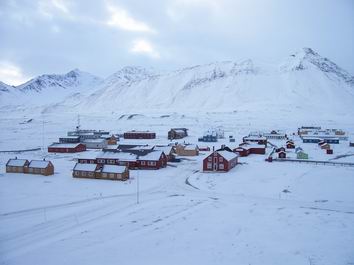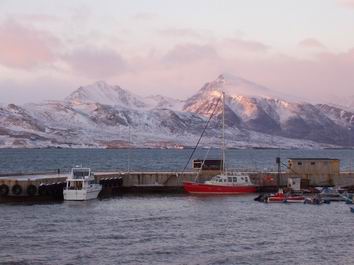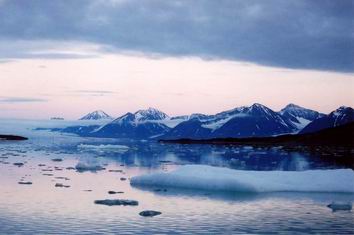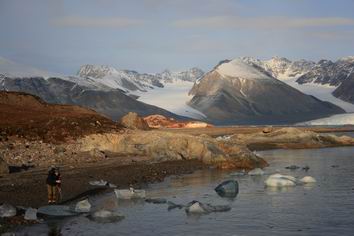

Ny-Alesund, Spitzbergen, Svalbard archipelago
Get a ring from Arctic MolluSCAN has a set up in the Far North, in Svalbard, a few hundred km from the North Pole. The aim is to follow, throughout the eyes of icelandic scallops, Chlamys islandica, the impact of environmental changes associated with global warming (current weather), and eventually contaminations, on the local aquatic fauna. The setting has been performed in collaboration with Akvaplan Niva (Lionel Camus), UNIS (Jorgen Berge), and the NPI (Norwegian Polar Institute).
Ny-Alesund is located at 1230 km from the North Pole, on the west coast of Spitzbergen, the largest island in the Svalbard archipelago. It is the northernmost permanently inhabited settlement in the world. It has developed into an international research platform (Kings Bay), with members from many nations. Polar bear are present there sometimes (see a video). 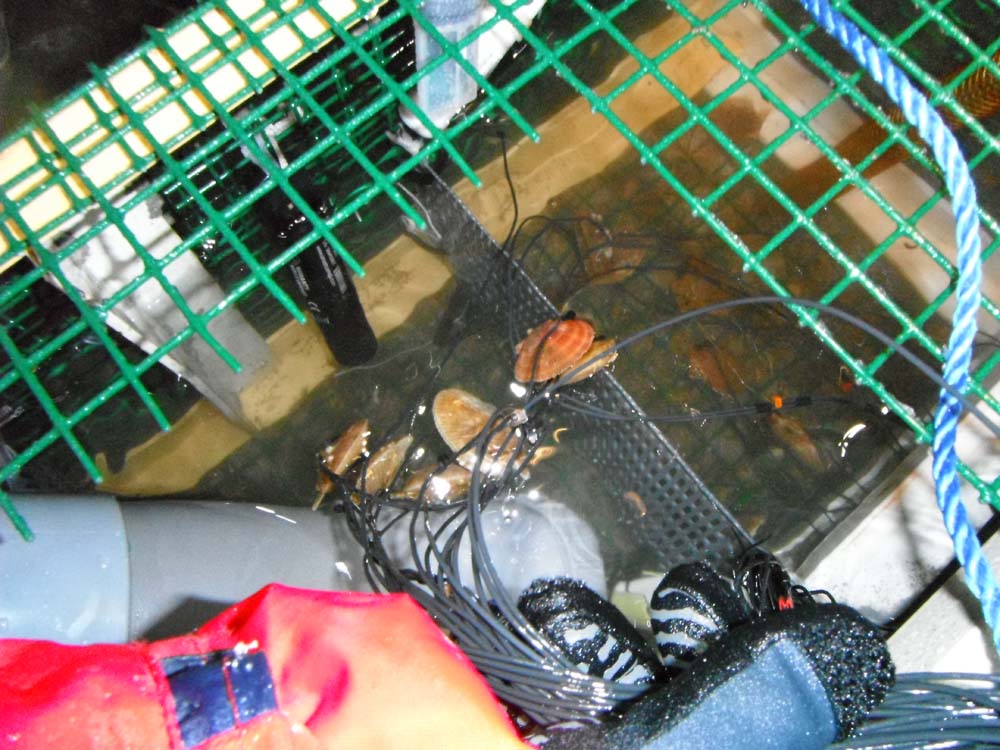 November 2011 and May 2012 were not our 1st trip in Ny Alesund. In March 2008, hosted by AWIIPEV, the MolluSCAN eye team participated to a workshop in Ny-Alesund entitled “Kongsfjorden System Workshop”. Its aim was the development of the site as a premier international arctic research and monitoring facility with two key-words: climate changes and pollution in arctic. Thirty five invited scientists were present, coming from thirteen countries (China, France, Germany, India, Italy, Japan, Korea, Netherlands, Norway, Poland, Sweden, United Kingdom, USA). Ny-Ålesund has been declared European Flagship Site which will be of importance for long-term research and monitoring in the arctic. Reliable environmental monitoring tools adapted for the Arctic environment are required to identify and document potential impacts associated with climate change (current weather) and pollution. The waters contain a sensitive and probably vulnerable flora and fauna due to specialized adaptations to Arctic environmental conditions (see the current seawater temperature and more). However, for many arctic species, their life cycles, adaptations and physiological mechanisms are poorly understood, and knowledge of species sensitivity to climate change, contamination and disturbance is also fragmentary. Therefore, there is a need for data to support environmental risk and impact assessments and to validate monitoring tools on sentinel animals. In this view, the Molluscan Eye project has been especially welcome. Why ? One of the reason is that it is designed to work alone in the polar night and cold while we are sitting back in South West France. Specifically, the MolluSCAN eye project is an "open window" into the Arctic polar night, a period during which it is so difficult to stay in the field for long period of time. It has been claimed that HFNI Valvometry appears as a reliable environmental monitoring tool adapted for the Arctic environment: cutting edge science (!!!). Thus, the groups of bivalves we equipped with electrodes and set in Ny-Ålesund are helping to identify and document potential impacts associated with climate change and long range pollution, especially mercury and persistent organic pollutants. This is the very first time that such a study is launched far north in the Arctic.
A nice movie on the submarine fauna in North Atlantic |

